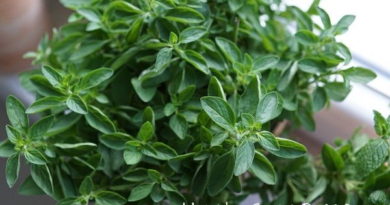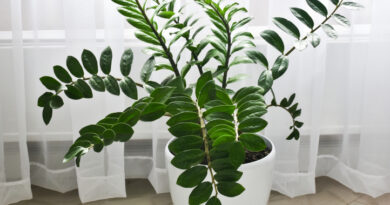Scindapsus Pictus: The Satin Pothos That Isn’t Pothos
Lovers of different types of pothos who are looking for another addition to your collection – look no further than Scindapsus pictus! While it is not technically a pothos (although it is a close relative) it is nearly indistinguishable – so much so that it is often referred to as silver or satin pothos.
It has heart-shaped matte leaves and variegated foliage. It makes a lovely addition to any indoor garden. This trailing plant does well in hanging baskets, but can also be grown in pots and allowed to spill over and sprawl.
Silver satin pothos with its heart-shaped leaves is a tropical plant and for this reason, it will need to be a house plant rather than an outdoor plant in most climates. The lush foliage of the satin pothos and the striking contrast of the green and silver variegated leaves add visual interest to your indoor houseplant collection. These indoor plants will be most at home in an area with bright indirect light in a pot with drainage holes and a light potting mix. Keep your satin pothos out of the direct sun and you’ll be enjoying the dark green leaves for seasons to come.
Quick Care Guide

| Common Name | Satin pothos, silver vine, silver pothos |
| Scientific Name | Scindapsus pictus |
| Family | Aracaea |
| Height & Spread | Can grow up to 10 ft tall in its outdoor habitat, usually grows to 3 ft as an indoor houseplant |
| Light | Bright, indirect light |
| Soil | Rich well-draining potting mix |
| Water | Regular, water when the top inch of soil gets dry |
| Pests & Diseases | Plant scale, spider mites, root rot |
All About Scindapsus Pictus

Scindapsus pictus (satin pothos) originated in the tropical regions of Southeast Asia. There, the silvery visage of Scindapsus pictus grows up the sides of trees. It can be grown outdoors in the same manner as a perennial in warm climates and when grown as an indoor houseplant, this silk pothos plant fits right in with other plants inhabiting your space.
Scindapsus pictus common names include silver satin, satin pothos, silver pothos, or silver vine. As its nicknames would suggest it resembles the common pothos and is a close relative. Satin pothos is also in the Arum family. While this pothos is an evergreen flowering plant, flowers rarely bloom in domestic environments.
Scindapsus pictus (satin pothos) is a bushy vine with heart-shaped leaves. They also have dark green, matte, variegated leaves. The word pictus translates to painted which likely refers to the silvery patches of variegation on the dark green leaves.
When adding Scindapsus pictus to your collection, please keep in mind this satin pothos plant is toxic to dogs, cats, and humans. It is a best practice to keep Scindapsus pictus (satin pothos) out of reach of any pets or small children.
There are several varieties of Scindapsus pictus (and plenty in the genus Scindapsus), all native to Southeast Asia. There are the lovely green and purple leaves of Scindapsus pictus exotica, and the uniquely variegated Scindapsus pictus argyraeus. What’s most exciting is no matter what variety you choose, Scindapsus pictus care is simple and fun!
Scindapsus Pictus Care

Scindapsus pictus (satin pothos) is known for being one of the easiest houseplants to keep alive. In fact, the needs of all the plants in the genus Scindapsus are straightforward, and it can be forgiving if you delay watering every once in a while.
Sun and Temperature
Scindapsus pictus require full sun which translates to 6-8 hours per day. It prefers bright light in the form of indirect sunlight in order to maintain the matte green leaves and variegated foliage. Harsh direct sunlight will scorch the leaves of satin pothos. Too little light can cause the leaves to lose their variegation. It is a best practice to place your satin pothos plant near a south-facing window, but not directly in front of it in the line of direct sunlight.
Scindapsus pictus cannot tolerate temperatures below 59 degrees Fahrenheit which makes this an indoor houseplant for most USDA growing zones although they can be grown outdoors in zones 10-12. These plants can be moved outdoors in spring or early summer as long as nighttime temperatures stay in the low 60s. It is extremely sensitive to frost/freezes so bear this in mind if you choose to move it outside. Excessive heat damage can also occur in extreme dry heat which will cause the leaf tips to turn brown. Growing the satin pothos as an indoor houseplant will help eliminate these potential problems.
Water and Humidity
Scindapsus pictus care involves simulating the same environment the plants experience in their native range. This tropical plant loves humidity and regular watering. Brown leaf tips can indicate dry air and in this case, it may be beneficial to add a plant humidifier nearby. Increase the relative humidity to 40-50% to prevent these issues. Satin pothos does best in a plastic pot with a sizeable drainage hole. Water regularly, allowing the soil to dry between watering at the top two inches. Apply room temperature water for best results. Reduce watering during the winter months when the plant growth slows for the season. Then increase again in spring as your Scindapsus pictus plants begin to grow new roots and new growth in the growing season.
Too much water can put your Scindapsus pictus plants in danger of contracting root rot. Ensure the drainage holes in the pot you grow your plant are wide enough and the growing medium is appropriate.
Soil
This vining plant does well in hanging baskets, but they’ll also grow in a pot that is placed on a shelf or on the ground. Be sure to fill the container with potting mix with good drainage materials. Satin pothos prefers its roots to be kept moist, but not waterlogged or soggy. It also prefers slightly acidic soil ph between 5-6, but can also tolerate neutral soils. If you’re working with a poorer potting mix, add some vermiculite or sand to promote good drainage.
Fertilizing

Apply a 20-10-10 diluted house plant liquid fertilizer monthly during the growing season. You may reduce fertilizing over the winter months. The addition of monthly fertilizing will help keep the foliage vibrant and healthy. Dilute the fertilizer to half-strength and gradually increase as spring and summer go on. In fall, reduce the concentration.
Pruning
Scindapsus pictus has a bushy growth habit and doesn’t necessarily require pruning. However, occasional pruning of the silvery leaves and green stems can encourage it to put out more growth. You can also thin the plant via pruning. Prune just below the leaf node. Use sharp pruning sheers and make a straight, clean cut. If you choose to prune your satin pothos then this will also provide you with the opportunity to propagate your cuttings. Read on below to find out how!
Propagation
Take cuttings during the summer when plant growth is at its height for the year. Place stem cuttings in the water and they should root in about a month. Scindapsus pictus has a vigorous root system and can even put out aerial roots and climb up trees this way in its native habitat. Once your stems have put out measurable root growth then you may transplant them directly into potting soil in a suitable pot.
Repotting
Repot in spring if the plant has outgrown its current container. Increase the pot size slowly going 1-2 inches larger than the current pot. This will help you avoid growing problems caused by too much water by not having extra soil to water in order to keep the whole pot moist.
Troubleshooting

Satin pothos is a great beginner houseplant because it is generally pest-free and has few disease issues. However, there are a few concerns with satin pothos that may crop up.
Growing Problems
Common problems are usually due to either overwatering or underwatering. Avoid overwatering by waiting for the top few inches of soil to dry out before watering again. Overwatering can result in yellow leaves. Conversely, if you notice curling leaves this can indicate underwatering. The two things that satin pothos does not tolerate well are cold drafts and soggy soil. Yellow leaves can also occur with improper humidity levels. Keep the silvery green foliage healthy with the right drainage, water, and humidity.
Some wonder why their satin pothos plant doesn’t produce flowers, and apply too much fertilizer in attempts to force flowering. This will stress Scindapsus pictus argyraeus or Scindapsus pictus exotica plant, putting it at risk for contracting diseases.
Pests
Scale insects can infest your satin pothos, particularly if you’ve decided to bring it outside in the warm weather months. The scales may hitchhike on your plant back indoors where it will quickly become evident with the lack of outdoor predators. Scale will appear as small, brown rounded lumps on your plant’s stems and leaves. Pop off these insects with a q-tip dipped in alcohol. If the infestation of these brown spots has not progressed too far then remove infected leaves to prevent their spread. In more serious cases you can apply an organic insecticide such as neem oil. Conventional contact insecticides work as well.
Spider mites are the most common issue for most indoor houseplants. They prefer a warm, dry environment with low humidity. A good preventative method is to increase humidity around your houseplants. The first signs of mites will be tiny holes in the leaves or small yellowish spots on the foliage. You may even notice tiny web clusters on the leaves as well. If spider mites have already appeared, but there is little to no damage to the plant then they can likely be manually removed with a forceful spray of water or wiping down your plants with a damp cloth. If the infestation is more serious, then insecticidal soap or organic insecticides containing pyrethrins can be effective at eliminating all the spider mites.
Diseases
Root rot is the main disease that can affect your satin pothos. The symptoms of root rot will appear as a soft mushy stem, wilting, and of course rotten roots. This type of rot is harder to recover from but can be remedied if there are still fresh, white roots on the plant that have not yet turned to mush. Cut back the rotted roots and plant them into a pot of dry soil.
Frequently Asked Questions

Q: How do you care for pictus Scindapsus?
A: Bright, indirect light. Water regularly when the top inch of soil dries out. Prune as needed and propagate cuttings as desired. This plant has the same care requirements as standard pothos.
Q: Is a Scindapsus pictus a pothos?
A: It is not a pothos. Both are in the Araceae family, however, Scindapsus is its own genus.
Q: Is pictus Scindapsus rare?
A: No, it is a very common houseplant.
Q: Does Scindapsus pictus grow fast?
A: No, it has a relatively slow growth rate.
Q: Can Scindapsus grow in low light?
A: Yes, however, the leaves may lose their variegation.
The Green Thumbs Behind This Article:




